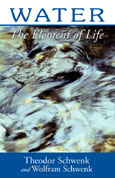Antropozófiával és geometriával kapcsolatos könyvek. Sajnos magyarul nem jelentek meg, ezért aki komolyabban foglalkozik a témával érdemes az interneten keresztül beszereznie ezeket a könyveket. Ez az oldal még feltöltés alatt áll!
Malcolm Stewart – Patterns of Eternity: Sacred Geometry and the Starcut Diagram
After extensive research, however, he found that it has extraordinary mathematical properties, suggesting that it may be no less than the source of the number system used when ancient humanity first built cities. He shows that the starcut diagram underlies many significant patterns and proportions across the world: in China, the shaman’s dance; in Egypt, the Great Pyramid; in Europe, a Raphael fresco; in Asia, the Vedic Fire Altar, and many others. This book is an intellectual adventure, written for a general reader without specialist knowledge. Illustrated with around 180 photographs, drawings and diagrams, it tells the story of many fresh discoveries, bringing sacred geometry to life in an original and inspiring way.

 An Introduction to Modern Geometry
An Introduction to Modern Geometry It is the living movement of water that makes life on Earth possible. Based on spiritual science and on their own numerous experiments, Theodor and Wolfram Schwenk show that our Earth is a living organism, with water as a sensory organ that perceives vital cosmic influences and transmits them into earthly life. This pioneering classic on water is more relevant now than ever before.
It is the living movement of water that makes life on Earth possible. Based on spiritual science and on their own numerous experiments, Theodor and Wolfram Schwenk show that our Earth is a living organism, with water as a sensory organ that perceives vital cosmic influences and transmits them into earthly life. This pioneering classic on water is more relevant now than ever before.